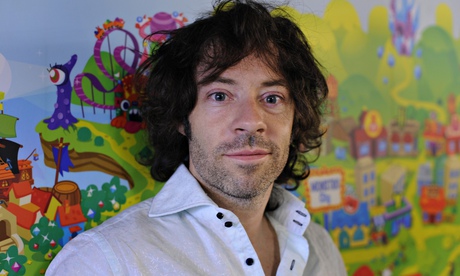
The Purcell Room on London’s South Bank was awash with positivity on Thursday, as the Bookseller Children’s Conference celebrated a section of the books industry where everything is rosy. If current trends continue, said the magazine’s charts and data analyst, John Lewis, this year is set to become the best year for children’s books since records began. Sales in children’s and YA publishing are up 10% in 2014 – an extraordinary performance against the backdrop of a market that is down 2% overall. And it’s not just about new titles. The backlist is making a particularly strong showing in both picture books and children’s fiction, with five of the current top 10 bestselling picture books dating from pre-2011 – including Judith Kerr’s 46-year-old classic The Tiger Who Came to Tea.
Adding to the sense of celebration, Bookseller children’s editor Charlotte Eyre and publisher Nigel Roby also announced the launch of the Bookseller YA book prize, for which any young adult titles by authors living in the UK or Ireland and published in 2014 will be eligible. (Full disclosure: I’ve been asked to be one of the judges, and have been emitting a thin, gleeful squeal ever since.)
The conference also examined young readers’ relationships with reading and technology. A Voxburner poll into the reading habits of those aged 15-24 found that over 70% of them still prefer print to ebooks, although they possess plenty of devices with ereading capability. Data collected by the National Literacy Trust in 2012, however, suggested that a newer generation of readers, those aged 8-18, are showing a steadily increasing fondness for reading on screens, perhaps reflecting the media they’re most accustomed to (and representing a possible future solution to the problem of covers perceived as solely “for girls” or “for boys”).
“Looking beyond the book” were Tom Bonnick, business development manager at Nosy Crow, explaining how to re-tailor content for different platforms, and Tim Collins of DC Thomson, who was charged with “reinventing the Beano” and acknowledged some hiccups along the way (“We made a balls-up of digital.”). Examining the subgroups into which young tech-users fall, Alison York (Nickelodeon UK) shed light on different online tastes and trends, and Michael Acton Smith, the inventor of Moshi Monsters, debated the perfect balance between mobile app content and commercial viability.
Bringing the right books to the right readers was also emphasised throughout. Georgina Atwell, the former head of iBooks, debunked “seven myths of discoverability”, warning against trusting too much to “the big shiny digital campaign”, and Beth Cox of Inclusive Minds called for diversity beyond box-ticking in children’s fiction, leaving behind tokenism, stereotypes and skimped research.
Overall, though, the mood was buoyant, with keynote speaker Ann-Janine Murtagh, executive publisher at HarperCollins Children’s, insisting there had never been a better time to work in children’s publishing. Profits may have tripled recently, but it’s passion, according to Murtagh, that predominantly drives the industry – a sense of being “custodians of the best children’s content”, with a unique responsibility to “create the readers of the future”. Invoking Dr Seuss in support, she reminded her audience: “Children want the same things we want. To laugh, to be challenged, to be entertained and delighted.”
As a kidlit junkie, I hope this optimistic mood is justified and that the children’s book market continues to rake it in, giving editors enough wiggle-room to experiment. With literacy levels at a depressingly low ebb, it’s more important than ever that children have access to the right books at the right time to infect them with the reading bug – whether that’s Minecraft handbooks, sharp new editions of timeworn classics or books in which they find their own experiences and context faithfully represented. The current sales boom will eventually pass, but the enthusiasm, knowledge and dedication of the people I met at the Bookseller conference will continue to serve young readers well.

